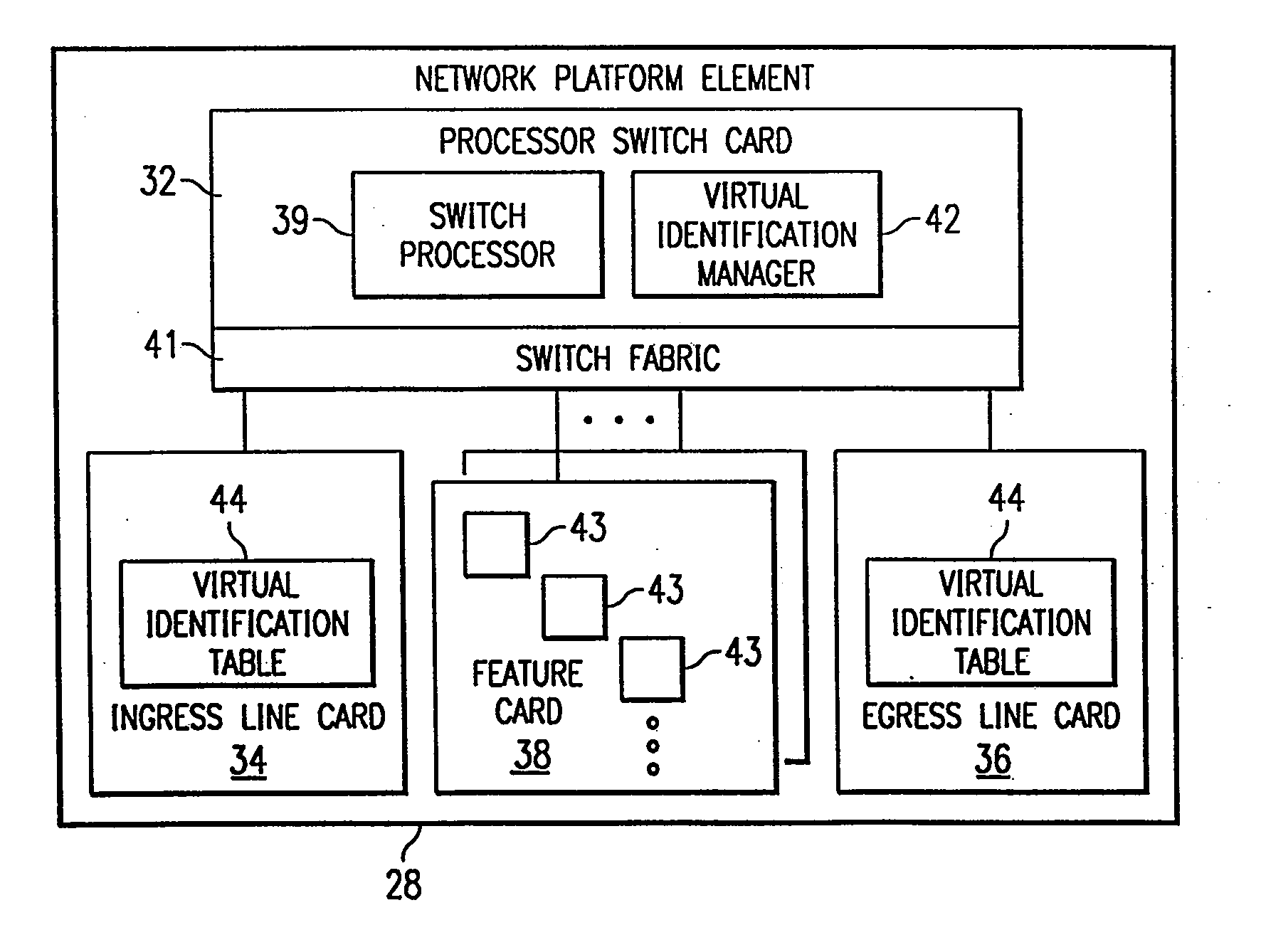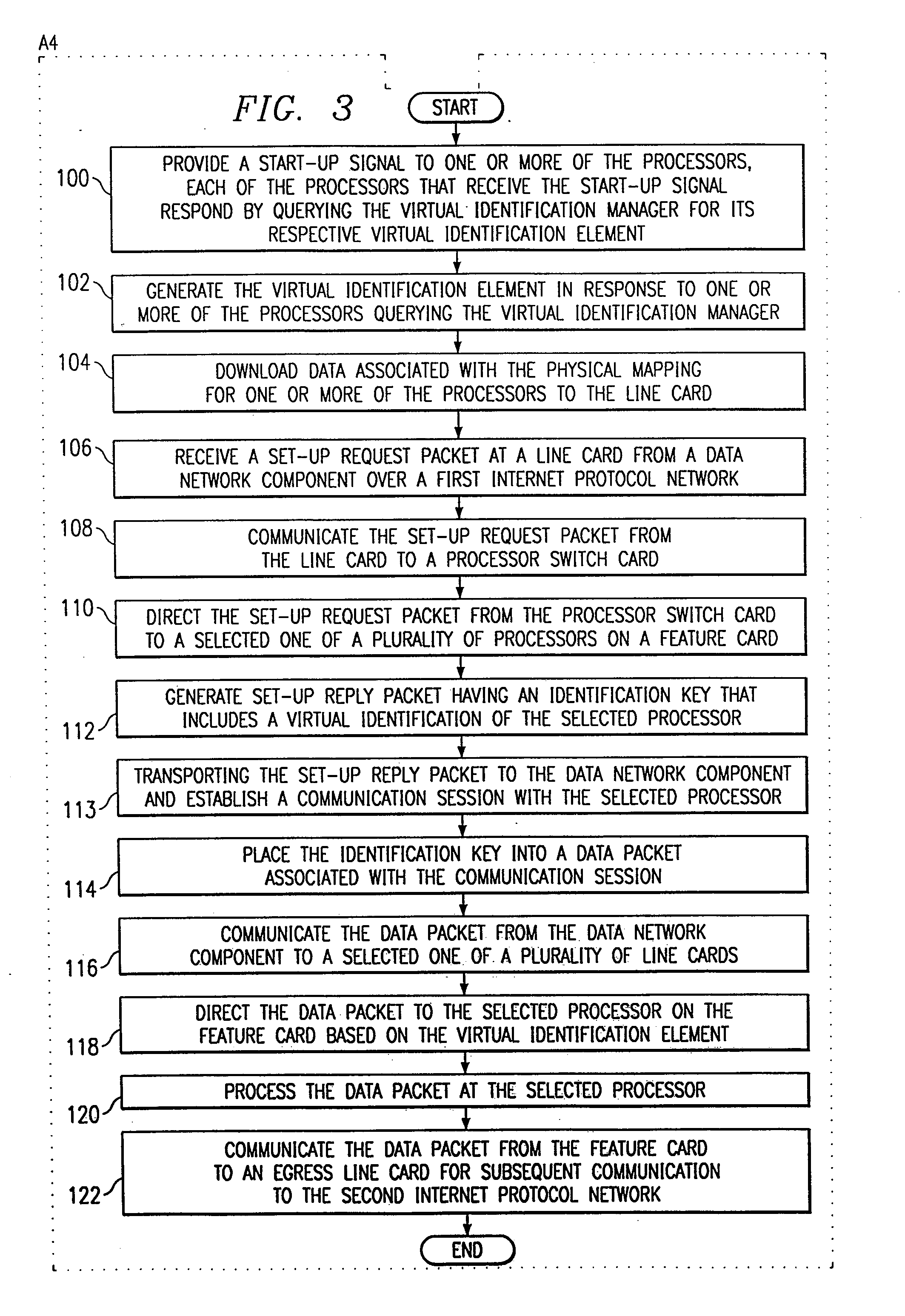System and Method for Processing Packets in a Multi-Processor Environment
a multi-processor and packet processing technology, applied in the field of computer communication, can solve the problems of slowed speed, system inability to execute effective routing techniques, and overall reduced bandwidth of communication system, so as to improve the routing and processing capability for information propagation, eliminate or greatly reduce disadvantages and problems
- Summary
- Abstract
- Description
- Claims
- Application Information
AI Technical Summary
Benefits of technology
Problems solved by technology
Method used
Image
Examples
Embodiment Construction
[0014]FIG. 1 is a simplified block diagram of a communication system 10. Communication system 10 includes a mobile station 12, multiple base transceiver sites 14, multiple base station controllers 16, multiple data network components 18, a pair of internet protocol (IP) networks 20a and 20b, and multiple IP network gateways 24. These elements within communication system 10 cooperate in a network environment to transmit, receive, and process packets of information or data, such as transmission control protocol / internet protocol (TCP / IP) packets, for example. The data packets or information communicated through communication system 10 may be voice, data, or any other type of signal carrying information sought to be communicated between two points.
[0015] Mobile station 12 is a communications interface for an end user for communication with IP network 20a. Mobile station 12 may be a cellular (or other wireless) telephone, a computer, a personal digital assistant (PDA) , or any other de...
PUM
 Login to View More
Login to View More Abstract
Description
Claims
Application Information
 Login to View More
Login to View More - R&D
- Intellectual Property
- Life Sciences
- Materials
- Tech Scout
- Unparalleled Data Quality
- Higher Quality Content
- 60% Fewer Hallucinations
Browse by: Latest US Patents, China's latest patents, Technical Efficacy Thesaurus, Application Domain, Technology Topic, Popular Technical Reports.
© 2025 PatSnap. All rights reserved.Legal|Privacy policy|Modern Slavery Act Transparency Statement|Sitemap|About US| Contact US: help@patsnap.com



